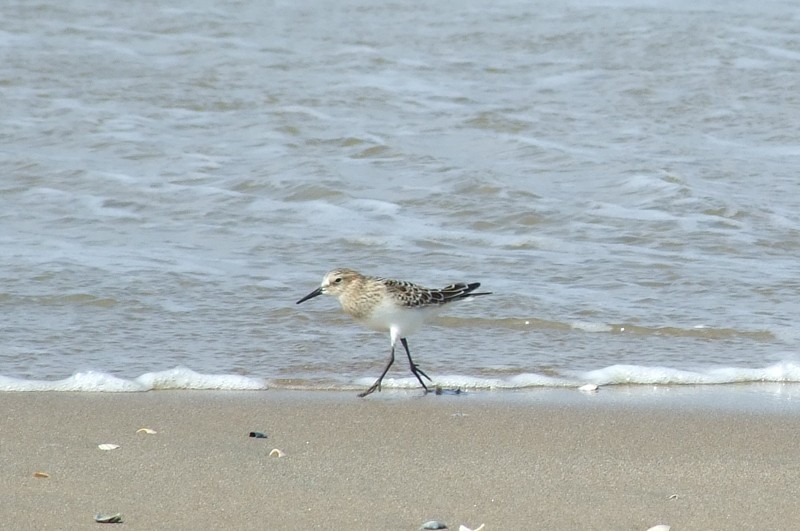Baird's Sandpiper
A species of Calidris Scientific name : Calidris bairdii Genus : Calidris
Baird's Sandpiper, A species of Calidris
Botanical name: Calidris bairdii
Genus: Calidris
Content
Description People often ask General Info
 , used under CC-BY-SA-3.0 /Cropped and compressed from original
, used under CC-BY-SA-3.0 /Cropped and compressed from original Description
Adults have black legs and a short, straight, thin dark bill. They are dark brown on top and mainly white underneath with a black patch on the rump. The head and breast are light brown with dark streaks. In winter plumage, this species is paler brownish gray above. This bird can be difficult to distinguish from other similar tiny shorebirds; these are known collectively as "peeps" or "stints". One of the best identification features is the long wings, which extend beyond the tail when the bird is on the ground. Only the white-rumped sandpiper also shows this, and that bird can be distinguished by its namesake feature. 
Size
18-20 cm (7-8 in)
Nest Placement
Ground
Feeding Habits
Baird's Sandpiper's diet is mostly crustaceans, insects, and arthropods. Baird's Sandpiper walk to find food, probing mud or pecking at surfaces. Known to feed away from water, sometimes referred to as 'grasspipers', baird's Sandpiper consume prey like spiders, cranefly larvae, various insects, and tiny crustaceans.
Habitat
Baird's Sandpiper inhabits tundra habitats in the Arctic, selecting dry slopes and barrens with alpine vegetation, often in rocky areas or along exposed ridges where plants like arctic poppies and mountain avens thrive. During migration, baird's Sandpiper frequents freshwater wetlands, lake and river edges, wet fields, and prairies across multiple continents, with a preference for mudflats over aquatic foraging. In the non-breeding season, baird's Sandpiper occupies the plains, meadows, and grazed lakeshores of South America, often at high altitudes up to 15,000 feet, in remote and windy areas.
Nest Behavior
Both sexes of baird's Sandpiper contribute to nest building and lining. Egg-laying typically follows the construction, with the incubation shared by parents, reflecting a cooperative approach to chick-rearing.
Nest Characteristics
Baird's Sandpiper nests are ground-based, often near a rock or under vegetation in dry tundra. They are simple scrapes lined with plant materials like leaves and lichens, measuring roughly 2.5 inches across and 2 inches deep.
Dite type
Aquatic invertebrate eater
People often ask
General Info
Feeding Habits
Bird food type
Sounds
Call
Recording location: Argentina
Behavior
The baird's Sandpiper exhibits unique breeding behaviors within its Arctic tundra habitat, where males establish territories with vocal and flight displays as snow recedes. These displays involve ascending flights and varied wing patterns, culminating in dramatic landings with distinct calls. Ground displays towards females are marked by specific postures and vocal trills. While courtship and defensive behaviors overlap, they can lead to mating. Post-egg-laying, male activity diminishes, and while both parents initially incubate and rear juveniles, females typically leave before fledging, with males overseeing chick development. Outside the breeding season, baird's Sandpiper often form flocks, ranging in size during migration and on wintering grounds.
Species Status
Not globally threatened.
Scientific Classification
Phylum
Chordates Class
Birds Order
Shorebirds Family
Sandpipers Genus
Calidris Species
Baird's Sandpiper